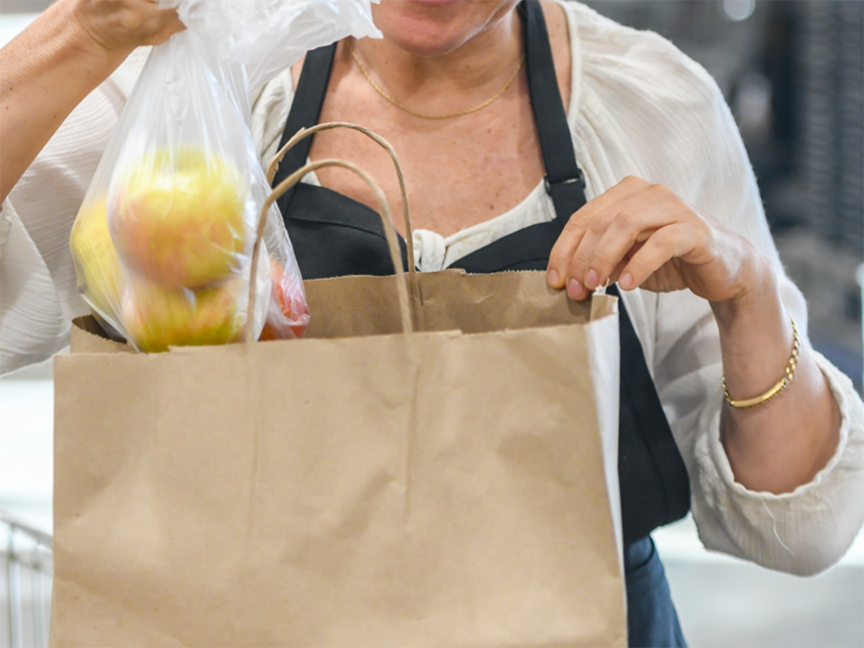
The way that consumers shop for groceries, and how supply chains get goods from beginning to end, has changed radically since the first “modern” supermarket, a store named Piggly Wiggly, first opened in Chicago in 1916.
The post-WWII era in the U.S. ushered in the modern supermarket, transforming how people expect to purchase their groceries. There have been many more changes since then, including how products are produced and packaged, how they reach supermarkets, and how the consumer ultimately purchases them.
We’re now going through another radical transformation. With rapid advances in technology, and a new era of consumer connection and convenience, food logistics is changing, too.
While the innovation in grocery has primarily been around maximizing price efficiency, around a decade ago, a new transformation began to emerge: shopping for groceries online.
E-commerce grocery has always faced the challenge of profitability. After all, the current model for online fulfillment still resembles the traditional method of shopping for groceries — it’s just that a hired hand, either a store clerk or third party, does the job for you. This is inefficient. It typically takes more than 60 seconds for a store associate or on-demand driver to pick out a single item.
Given the razor-thin margins in the grocery business, there’s significant pressure today to be profitable across supermarket chains. At the same time, consumers are demanding more efficient ways to shop for groceries, whenever and however they want.
While there have been advances with online or app-based ordering, grocery customers have yet to find the experience satisfying. Expectations of delivery time have risen substantially, driven by ordering apps like DoorDash and Uber Eats. Meanwhile, most supermarkets still struggle with the basics of fulfilling high-quality, accurate orders.
Driving Efficiency With Packaging
For online grocery, product packaging will be an important part of the answer to driving more efficiency. Take cereal, one of the easiest items to bag for an e-order. It’s a clearly branded dry good, with minimal risk of damage, and it’s easy to count. It’s more of a challenge when considering many perishable items with different sizes and types. If a customer needs five apples, for example, a grocery store needs an intermediary to find the right variety, place the correct number of items in the bag, and ensure the right “aesthetics” — which is very important for fresh products — in a matter of seconds. Customers are quick to become dissatisfied if an apple bag isn’t tied properly, or if there are too many blemishes on a piece of fruit.
In e-commerce, everything needs to be bagged. There needs to be a clear, defined system, particularly for produce. Storing products in pre-packed format for e-commerce orders makes the job of picking easier. It’s a faster process with less room for error. The tradeoff is limiting consumer choices to an extent. Still, it’s worth it in an environment where time and accuracy are of the essence.
Bagging all goods for e-commerce impacts the entire supply chain. Some food processors might need to change the ways they produce. Transportation companies will also have to think about procedures in a new way when considering product packaging. This opens up new opportunities for technology and service providers to innovate in this space, and make e-commerce stronger across the supply chain.
Advances in Inventory Management
Over the last two decades, e-commerce has brought huge transformations to inventory management for general merchandise. We’re only now seeing this come to a head in the grocery industry.
Historically, most supermarkets have struggled with accurate, real-time data on in-store inventory and stock replenishment. Given the large number of SKUs and easy item-for-item substitutions when a specific brand of a product isn’t available, that level of data precision wasn’t essential. Having five different salt brands fully stocked on store shelves isn’t necessary for creating the desired consumer shopping experience.
With the coming of e-commerce grocery, however, consumers expect to have an accurate view of available products through shopping websites, and receive the exact products as ordered. That places significant pressure on grocers to increase their sophistication in real-time inventory management. The online experience needs to match what’s available in store.
Supermarket chains need first to upgrade their technologies. But the entire supply chain must improve with them shortly thereafter. Distributors will now face higher expectations to deliver the right stock at the right time, with the ability to make rapid adjustments based on the changing needs of each individual supermarket. Transportation companies will also have to raise service levels in support of grocers.
On the one hand, large and small food chains are busy producing the best model. On the other, food delivery apps are trying to create a model that, from their point of view, offers the best shopping experience to the consumer.
To meet customers where they are (and where they may be headed), there needs to be systematic change across the food supply chain, including stronger technologies and new ways of functioning. From packaging to grocers to distributors to tech providers, the online grocery model will continue to evolve in ways that might surprise people today, paralleling the stunning transformation of grocery store chains in the mid-20th century.
Francesco Fazio is a partner in the Chicago office of Treacy & Company, and head of its innovation practice. Xiao Liu is an alum of the firm.







